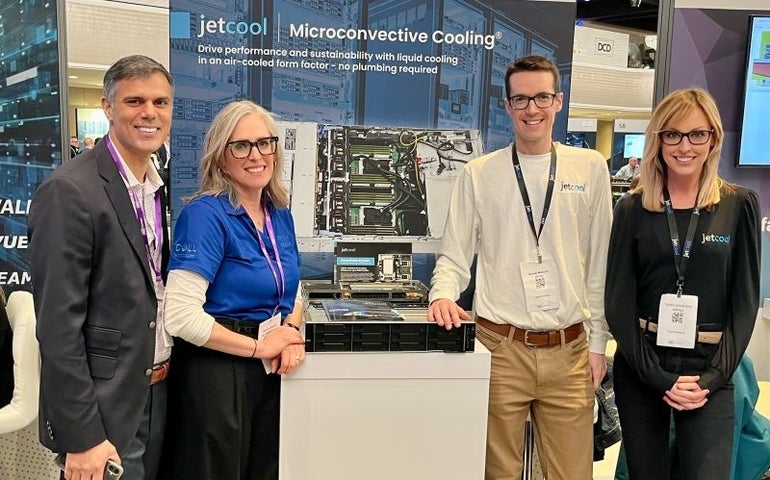Littleton-based JETCOOL Technologies, Inc. will receive more than $1.2 million from a U.S. Department of Energy division to advance cooling technology for data centers.
The funding is part of the ARPA-E Cooling Operations Optimized for Leaps in Energy, Reliability, and Carbon Hyperefficiency for Information Processing Systems (COOLERCHIPS) program, which aims to develop high-performance, energy efficient cooling solutions for data centers.
“We are thrilled to receive this award from ARPA-E [ Advanced Research Projects Agency-Energy],” JetCool CEO Bernie Malouin said in a Wednesday press release. “It is a testament to our team’s hard work and dedication in developing innovative cooling technologies that can reduce energy consumption in data centers while also reducing their carbon footprint.”
JetCool uses a proprietary microconnective cooling technology to cool systems through direct liquid-to chip application and sealed cold plates, according to the company’s website.
Data centers, which house computing infrastructure and data storage, account for approximately 2% of total U.S. electricity consumption, according to the press release. Cooling these centers can take 40% of that energy usage, according to the U.S. Department of Energy. Keeping the temperature down in computing systems improves performance.
ARPA-E advances high-potential, high-impact energy technologies that are too early for private-sector investment. ARPA-E awardees develop new ways to generate, store, and use energy, according to the agency’s website.
JetCool is one of 15 companies, and the only one in Massachusetts, to receive some of the $40 million distributed through the COOLERCHIPS program in its latest round of funding, according to a May 9 press release from the DOE.
“Climate change, including severe weather events, threatens the functionality of data centers that are critical to connecting computing and network infrastructure that power our everyday lives,” said U.S. Secretary of Energy Jennifer Granholm in the press release. “DOE is funding projects that will ensure the continued operation of these facilities while reducing the associated carbon emissions to beat climate change and reach our clean energy future.”

